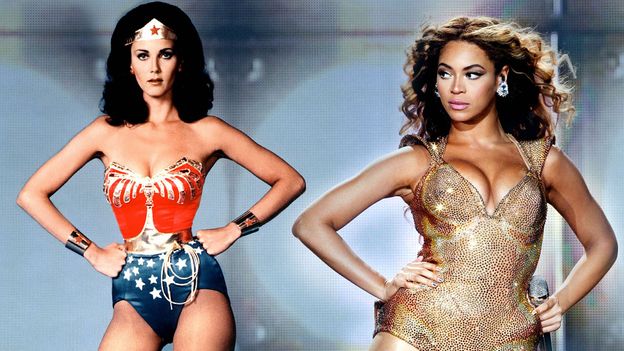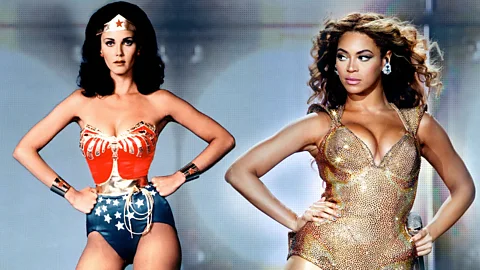 Getty Images/ Alamy
Getty Images/ AlamyWith legs planted far apart and hands on hips, is this stance powerful or ridiculous?
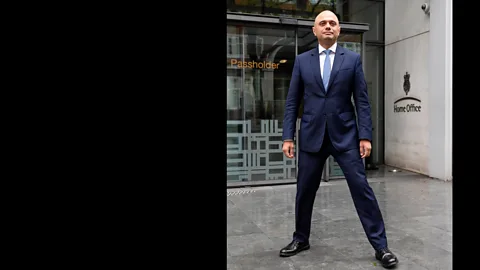 Reuters
Reuters“For a power pose to work, you need to look quite relaxed,” says Rupert Wesson, academy director at the professional coaching company Debrett’s. “The moment the onlooker thinks it is artificial it automatically loses its power.”
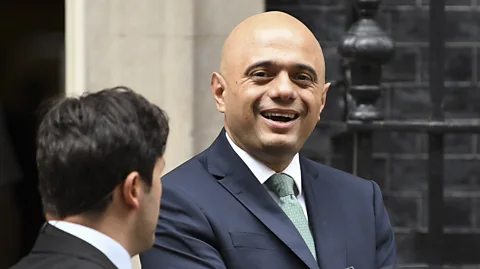 Getty Images
Getty ImagesAs the incoming British Home Secretary, Sajid Javid had expected to make some headlines – but when he arrived at his new office it was not his policies that drew attention. It was the way he was standing.
Snapped while facing journalists outside the building in Westminster, London, Javid stood with his legs planted unusually far apart. To British newspaper editors, it looked like a classic power pose. They then had some fun, running images of his fellow politicians in similar poses and analysing why he might have struck such a stance.
In fact, it later transpired that he might not have been power posing at all – footage appears to show that he was photographed mid-move, changing stance to accommodate journalists’ requests. But the coverage raised some interesting questions about the benefits of power posing, and whether it really has the impact those who use it think.
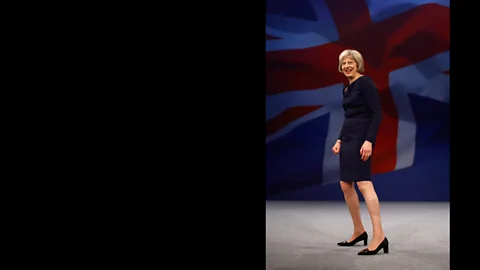 Getty Images
Getty ImagesThe classic power pose is to plant your feet wide apart, often with hands on hips, and look directly at your audience. The stance is said to make the poser feel and seem more confident.
But it’s not as easy as it looks. Many politicians have been ridiculed for standing with their legs too far apart and it highlights an important rule: like plastic surgery, power posing works in your favour only if it is done so discreetly that people don’t notice you are doing it.
“For a power pose to work, you need to look quite relaxed,” says Rupert Wesson, academy director at the professional coaching company Debrett’s. “The moment the onlooker thinks it is artificial it automatically loses its power.”
In general, Wesson says, it is difficult to point at a politician who has perfected the power pose as those who crack it have done so discreetly. He does encourage people who lack confidence to replicate the body language of those who seem naturally confident, but without overdoing it.
Power posing became a phenomenon after a 2010 study by three US academics attracted global attention. The researchers asked participants to assume either high-power or low-power poses for two minutes. They found that the high-power posers experienced a rise in testosterone, a fall in the stress hormone cortisol and, during a gambling task, showed greater feelings of power and tolerance for risk.
Power posing, they concluded, changed how you felt and also altered your behaviour and body chemistry. By adopting it, the study suggested, people could “embody power and instantly become more powerful”.
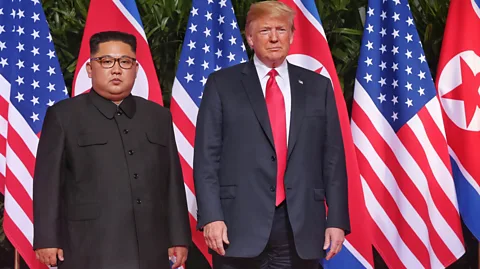 Getty Images
Getty ImagesYet even as some women adopt power posing as a feminist statement, some male politicians are using it to demonstrate manliness. Donald Trump is one such example, but both Wood and Wesson warn he’s not getting it quite right.
“Trump is an example of how power posing does not bring you any benefits if you look stiff, angry or rigid while doing it,” Wesson says. “His power posing would be much more effective if he could relax his face, which usually looks distorted and angry.”
Wood says Trump’s power posing is one example of how attempting to appear dominant can actually make you look weak. “His desire to look more powerful and alpha than everybody else has the opposite effect,” she says.
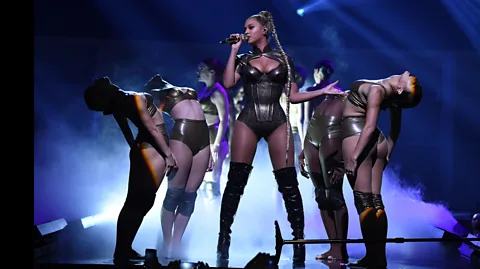 Getty Images
Getty ImagesIt’s not just politicians, however. Pop star Beyoncé has made power posing an integral part of her concerts, music videos and overall image.
Her pose has drawn comparisons with Wonder Woman, the fictional superhero who first appeared in a comic in 1941.
”The creator of Wonder Woman wanted women to have a powerful role model and for men to recognise women’s power, so he made her stand with her legs farther apart and put her hands on her hips, both of which signal that you are fearless and ready to act,” says Wood.
According to Wood, Beyoncé began adopting a similar stance after details of her husband’s infidelity became public.
“In the music video to the song about the infidelity there are a lot of power poses, which is a way for her to signal that she’s a strong woman who isn’t weak for allowing her husband back,” Wood says.
Other female pop stars, including MIA, Katy Perry and Taylor Swift, have also struck power poses on stage and, in Swift’s case, on the cover of clothing brand ASOS’ magazine.
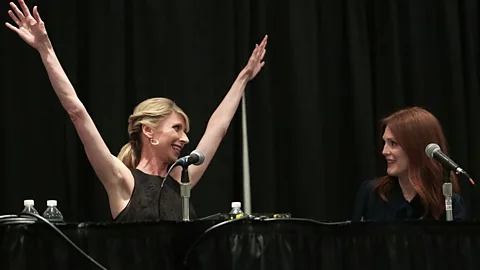 Getty Images
Getty ImagesA subsequent TED talk on the subject by Amy Cuddy, one of the study’s authors and a social psychologist at Harvard University, became the second-most watched video on the site to date. Cuddy’s book about power posing, Presence, also became a bestseller.
The study’s findings, however, were subsequently challenged. A 2015 study, which used four times as many experimental subjects, found that power posing had no effect on hormone levels or willingness to take risks. Further studies in 2017 found that while power posing might make you feel good, it did not translate into powerful or effective behaviours.
”The testosterone finding in Amy Cuddy’s research has been debunked and other research shows it only makes the person feel more confident and does not have any effect on the subsequent behaviour,” says author and body language expert Patti Wood.
Cuddy responded earlier this year with a new study restating the effects of power posing on emotions and the debate looks likely to continue. But one thing is clear – there is a lot of interest in what role our stance might play in feeling and projecting confidence.
Politicians in particular are increasingly being coached on their body language. According to Wesson, how you stand is the most important part.
”Politicians are often taught that shifting from side to side while talking can make it look as if you are also shifting back and forth politically, so they are being guided to stand still and look very grounded by placing their legs far apart,” he explains.
Wood, who has analysed several politicians’ use of power posing, says people should follow one simple rule: read the situation before striking a pose.
”It should be motivated by what is going on, what you are saying and whom you are with,” she explains. “If you attempt to show power when you do not have it or when you should have been showing friendship instead it can be seen as highly negative.”
Theresa May is another example of a politician who has been caught power posing. Like other Conservative politicians she has been seen standing with her legs wide apart and her arms down by her side. The habit of using the stance by members of her party has led to the phrase “the Tory power pose” being coined.
“It is a dominant pose, but what you are seeing in her is just a slight victory display,” explains Wood. “She is also seen retreating rather than leaning forward, which makes the pose a little more balanced.”
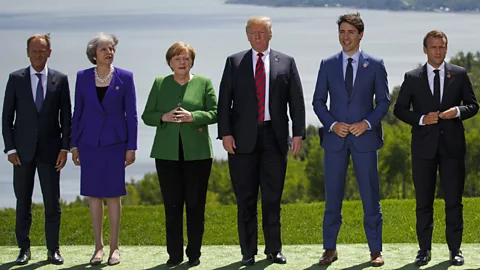 Getty Images
Getty ImagesThere’s another potential problem too, particularly for a political leader who deals with people from across the globe. Power posing, says Debrett’s Wesson, “works very badly across cultures”.
“There is a belief that power posing will make you look dominant and, while that may be the case in countries based on the individual, the so called ‘I-cultures’, it translates very poorly to countries that are considered ‘we-cultures’ because of their focus on collectivity over individuality,” he says.
”To be physically dominant is often looked down upon in some Asian countries, and then a power pose is particularly unhelpful.”
Overall, both Wood and Wesson argue that – although there are challenges – power posing is an interesting tool to work with, whether you are in the public eye or not.
Rather than using it to try and dominate in a situation with other people, however, they recommend doing it in a private space to gain the proven benefit, the increased feeling of power.
“Do it in private or, if you decide to do it in public, make it subtle,” says Wesson. “And whatever you do, do not overdo it.”


